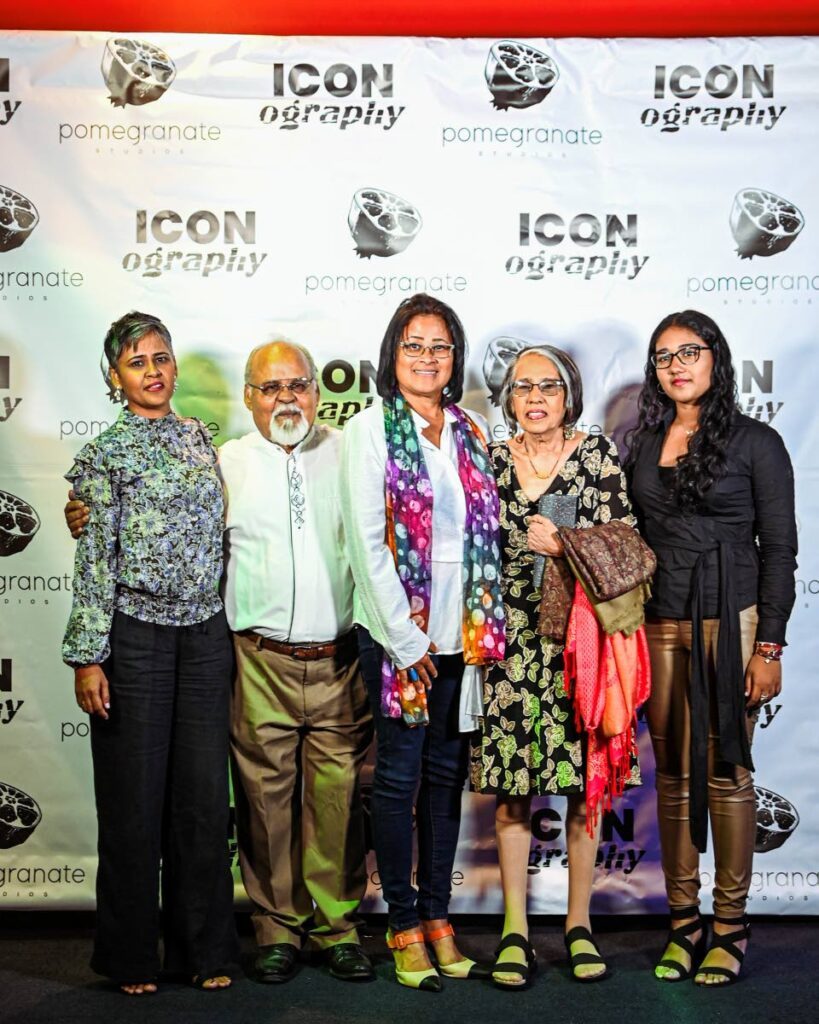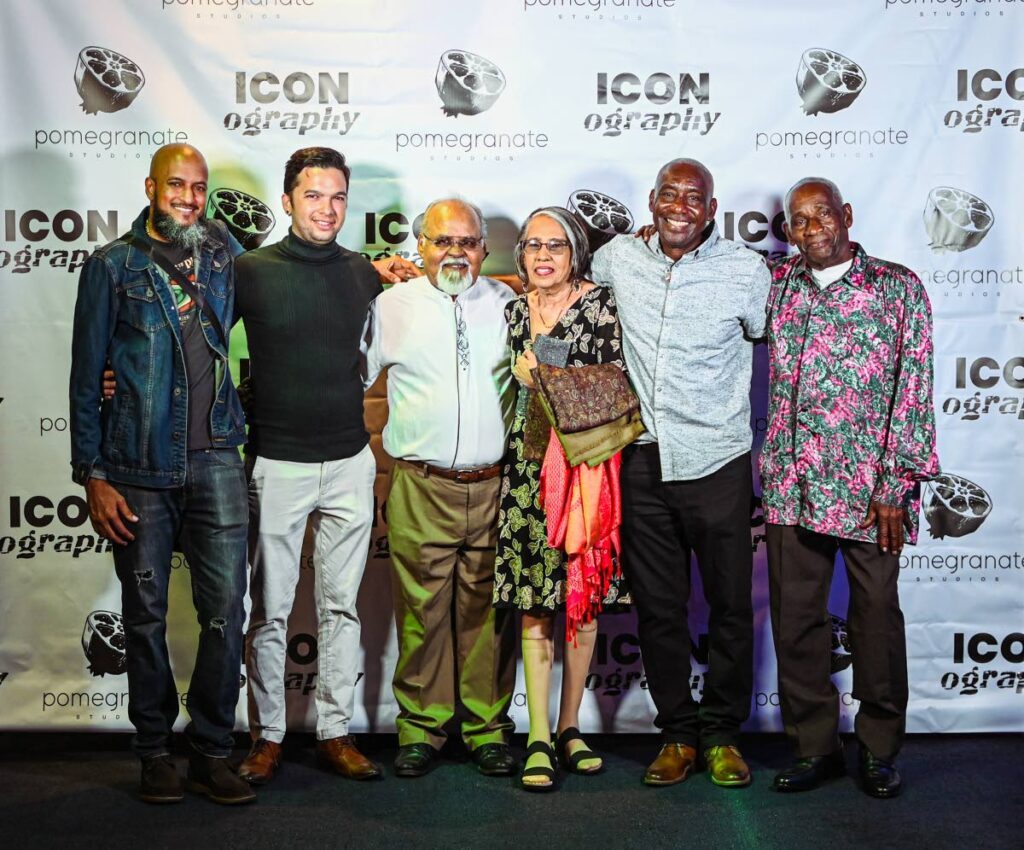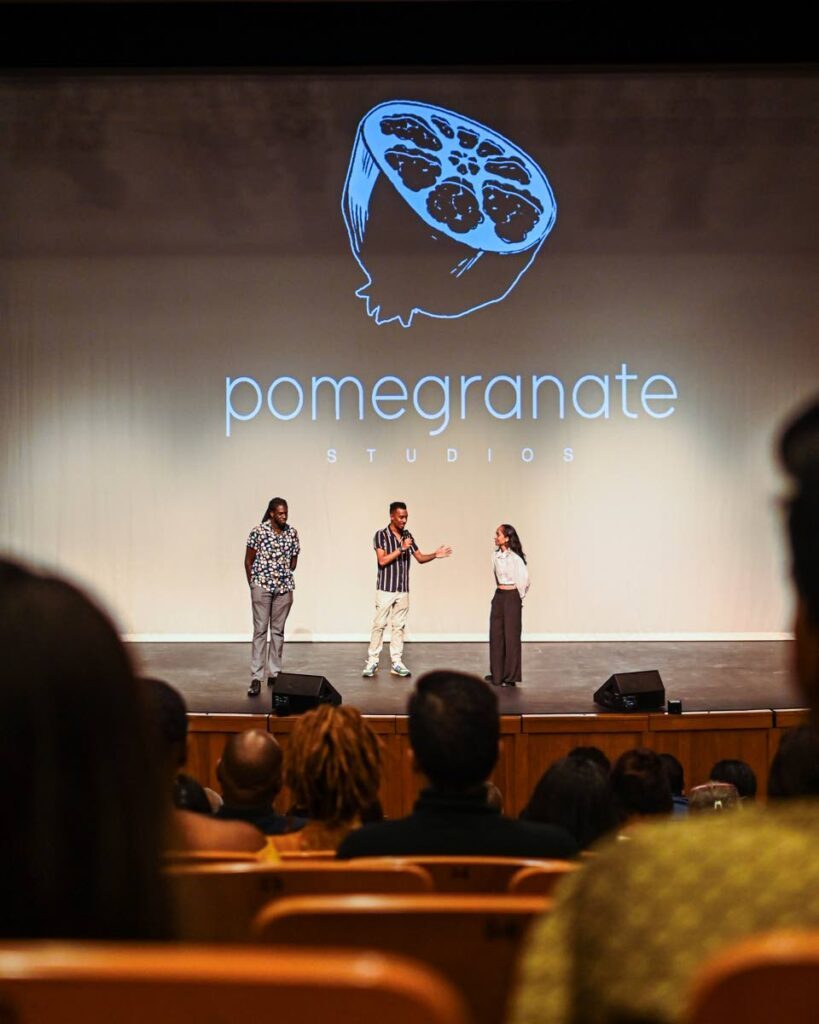Patasar film honours home-grown talent, wows audience

The film Iconography: Mungal Patasar is an insightful look at the career of the pioneering musician, the first to merge the music of the steelpan and the sitar in Trinidad and Tobago. The documentary, created by Mikhail Gibbings, Teneka Mohammed and Aviel Scanterbury, through their production company Pomegranate Studios, premiered at Queen’s Hall, Port of Spain on March 22.
Patasar’s story is told in his own words, from growing up in a house filled with music in La Fortune Estate, learning to read and write music at St Benedict’s College, his childhood illness, falling in love with the sitar and learning to play it by watching a Ravi Shankar video and appearing on Mastana Bahar in 1978.
He spoke about the cultural differences he encountered while he was growing up, including Indians feeling non-Indians were immoral, and people telling him there was no room for Indian classical music in TT.
Patasar told how he went to India at 40 with his family to learn sitar, returning with two degrees in 1990, his meeting with pan player and arranger Harold Headley, the formation of Pantar with Headley, Marlon Charles and Earl Carnavon and his son Prashant, signing with Virgin Records, their subsequent rise to fame and tours in Europe, his further development and his plans for the future.
For those who were not aware of his story – and there were a few at the screening – the 45-minute film was eye-opening, especially the extent to which his music has spread around the world, and the obstacles in terms of acceptance he faced in TT, some of which young artists still face today.

In addition to the interviews recorded of Patasar, his daughter Sharda, Headley and Charles and others, the film contains footage, photographs and memorabilia of Patasar’s life and performances, which had been collected and by his wife Roshni. The filmmakers were enthusiastic in their appreciation of her assistance in putting the film together.
The film was funded through the support of sponsors such as NGC, NLCB and NFM – Lion Brand.
Speaking to approximately 100 people during the question-and-answer session following the premiere, Gibbings said it was a dream to be able to stand on the Queen’s Hall stage to present the film.
“I hope you enjoyed the film the way we enjoyed watching you watch it. Thank you for what you (Patasar) and Pantar have done to lay a musical foundation for all of us who want to create things that may not feel as proven in this space. We feel it was scary in the beginning, and it doesn’t feel as scary knowing that somebody like yourself have all laid the foundation for us.”
Filmmaker and playwright Tyker Phillip said she was proud of the team for their work in chronicling TT’s stories.
“There are a million stories in TT and one person cannot tell all the stories. It cannot be one body to tell all the stories, so thank you for taking this upon yourselves. Thank you for going into his yard and catching Mr Patasar so we can share this story with our peers and for the children that are not yet born.”
She referred to the work of Christopher Laird and the late Tony Hall, both well known for similar efforts in chronicling TT’s culture.

“This is a responsibility we have like Christopher and Tony, who walked around with their cameras and their mics and their lights for their peers and their mentors, so that we had the opportunity to have things like Banyan and Gayelle. That’s what we grew up with, and so people who haven’t reached yet will grow up with the work we create. It’s an honour to document and archive our home-grown talent.”
Mohammed said she was glad to be able to work on the Iconography project, which showcased the work of elder artists through their words and the testimony of their peers and contemporaries.
“As potential successive carriers of the cultural torch, we feel it is our duty and responsibility to make sure that our contemporaries and those who come after us come to know the legends who paved the way, for if we do not document their stories, I’m afraid they will be lost forever.”
Gibbings said the team had been lucky in the people they had met so far in filming their Iconography series, as the people they’ve interacted with were willing to work with them.
“The cultural space is very complicated and difficult to navigate. There’s a certain discomfort with sharing too much sometimes, especially from a generation that has been robbed, intellectually, emotionally, sometimes physically, and it’s a difficult situation to navigate most of the time.
"We have been lucky in all of the things we’ve been able to do so far, and we’ve only met kind, generous, gentle people who care so much about culture and the stuff we’re doing.”
He said the team focused on telling the story of creatives as they are creatives themselves.
“We are starting in a place where we are musicians, artists, creators first, and we want to be able to tell our stories first, made by us, told by us in a way that we feel the artists want to represent themselves. More and more we’ve been letting other people tell our stories and it’s great when they come and project our voices as far as they want to project our voices, but I think it’s more important for us to tell our stories because we know how we want to do that.”

One audience member was amazed, because he remembered being trained by Headley as a young man, and hadn’t realised the extent to which the musician had travelled.
Gibbings said it was amazing to see the foundations on which TT culture has been built through interacting with people who were able to archive and document their stories.
“It’s interesting to see how it affects different generations, contemporaries in the space who were there to see the story unfold and for us who are seeing the story decades in the future who are trying to pave our own way. For us seeing these things is seeing a map that many of us were told did not exist.”
He said it was encouraging to know that others have gone through the journey he was currently going through.
“Many of us are told that this is not a space where creativity is possible as a job. This is our job, our profession, our work. We do film, we make music, we make art, we make anything we can and we were told many times by many people growing up that this is not a job, this is not a real thing you could do. And then you hear the stories, like King David Rudder and like Mungal Patasar and you realised they started the same place you started, and that makes this feel so much more possible and real.”
Scanterbury’s mother, Betty, thanked the team for putting the film together. She said normally people are not celebrated until they die.
“You know in this Trinidad place where we are so talented, somehow we don’t seem to celebrate ourselves. We need to do that more often. The thing is that, one morning you turn on your radio and then you start to hear someone’s music, and you sure they dead. That’s the only time we look to celebrate people, after they’re gone. So we have to do this more often, celebrate people while they are alive, so they could understand how much we appreciate them.”
Scanterbury said the documentary took a lot of time to pull off and the journey was an achievement.
“Getting to go into the lives of these people who were so gracious to allow us to go into their space and not ask anything, and there are a lot of things we would have spoken about in these interviews that didn’t make it on-screen here, and we had a constant battle of what to put in and what to take out. Even watching it there, there are things we could have done better, but we’re grateful for the opportunity.”
Scantlebury said he was a musician by trade, and being on the other side of the camera was a different experience, which he was happy to be a part of.
Another audience member commended the team on the technical aspects of the film, such as lighting and sound. Gibbings said they prided themselves on doing a good job.
“If it’s not made well, there’s no point. We’ve trained for years and years and we’re glad to know that it’s showing. Aviel and myself wrote some of the score for the film, some of it inspired by Patasar’s Calebasse Café.”
Roshni Patasar said the film should be shown in all schools, as it would assist in reducing school violence.
“If we would introduce these things in schools, and show the children it is not only academic intelligence we need, we can also look at musical intelligence, and other intelligences we might have, expose the children to it so we don’t have that kind of violence we are seeing in schools. I would advise you all to approach the Minister of Education and ask her to get it into the schools if possible.”
Gibbings said further screenings will be held in the future, including in schools, free pop-ups, and streaming platforms.
“We feel this is an important educational tool. Younger people, I feel younger people need to see this, to understand the roadmap that was laid for us by people who went before. We want to get as many eyes on it as humanly possible. The main thing at this point is we have these things to have everybody come together. We will be back as often as we can to tell as many stories as we can.”

Comments
"Patasar film honours home-grown talent, wows audience"